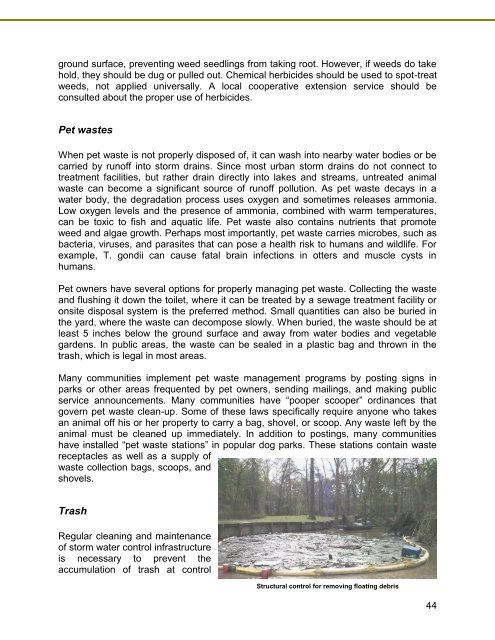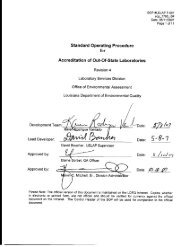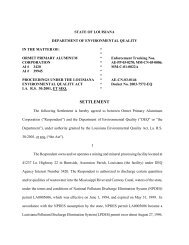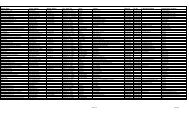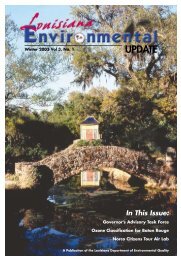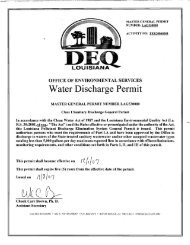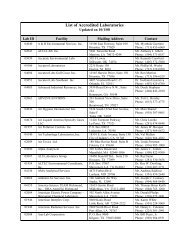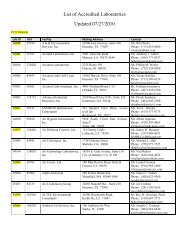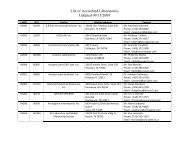Bayou Lafourche
Bayou Lafourche - LDEQ Nonpoint 319 Projects
Bayou Lafourche - LDEQ Nonpoint 319 Projects
- No tags were found...
Create successful ePaper yourself
Turn your PDF publications into a flip-book with our unique Google optimized e-Paper software.
ground surface, preventing weed seedlings from taking root. However, if weeds do take<br />
hold, they should be dug or pulled out. Chemical herbicides should be used to spot-treat<br />
weeds, not applied universally. A local cooperative extension service should be<br />
consulted about the proper use of herbicides.<br />
Pet wastes<br />
When pet waste is not properly disposed of, it can wash into nearby water bodies or be<br />
carried by runoff into storm drains. Since most urban storm drains do not connect to<br />
treatment facilities, but rather drain directly into lakes and streams, untreated animal<br />
waste can become a significant source of runoff pollution. As pet waste decays in a<br />
water body, the degradation process uses oxygen and sometimes releases ammonia.<br />
Low oxygen levels and the presence of ammonia, combined with warm temperatures,<br />
can be toxic to fish and aquatic life. Pet waste also contains nutrients that promote<br />
weed and algae growth. Perhaps most importantly, pet waste carries microbes, such as<br />
bacteria, viruses, and parasites that can pose a health risk to humans and wildlife. For<br />
example, T. gondii can cause fatal brain infections in otters and muscle cysts in<br />
humans.<br />
Pet owners have several options for properly managing pet waste. Collecting the waste<br />
and flushing it down the toilet, where it can be treated by a sewage treatment facility or<br />
onsite disposal system is the preferred method. Small quantities can also be buried in<br />
the yard, where the waste can decompose slowly. When buried, the waste should be at<br />
least 5 inches below the ground surface and away from water bodies and vegetable<br />
gardens. In public areas, the waste can be sealed in a plastic bag and thrown in the<br />
trash, which is legal in most areas.<br />
Many communities implement pet waste management programs by posting signs in<br />
parks or other areas frequented by pet owners, sending mailings, and making public<br />
service announcements. Many communities have ―pooper scooper‖ ordinances that<br />
govern pet waste clean-up. Some of these laws specifically require anyone who takes<br />
an animal off his or her property to carry a bag, shovel, or scoop. Any waste left by the<br />
animal must be cleaned up immediately. In addition to postings, many communities<br />
have installed ―pet waste stations‖ in popular dog parks. These stations contain waste<br />
receptacles as well as a supply of<br />
waste collection bags, scoops, and<br />
shovels.<br />
Trash<br />
Regular cleaning and maintenance<br />
of storm water control infrastructure<br />
is necessary to prevent the<br />
accumulation of trash at control<br />
Structural control for removing floating debris<br />
44


